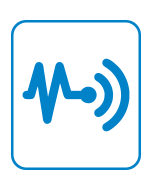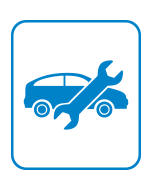Transportation and Logistics Market Insights—The Netherlands
Transportation and Logistics Market Insights—The Netherlands
The Adoption of New Technology, the Evolution of Warehousing, and Synchromodality Transportation are Reshaping the Logistics Market
31-Oct-2017
Europe
Description
The Netherlands’ economic growth is primarily driven by the increasing private consumption and the improving transport infrastructure. The country's geographical location favors trade with countries in Northern Europe and helps attract foreign investors. A key long-term factor that will contribute to the enrichment of the Dutch economy is the constructive partnership between trade unions, the government, and companies. GDP growth is projected to remain at or just over 2.0% in 2017-18. Private consumption growth will stay solid through the forecast period as wage growth picks up and as unemployment declines further. Business and residential investment will remain strong, both supported by rising confidence. The Netherlands is a member of the European Union and the European Monetary Union and has multilateral and bilateral trade agreements with several countries. The government has taken initiatives to streamline regulations, promote competition, and encourage entrepreneurship to support growth.
Digitization will be the key factor driving the transportation sector. The major automotive ecosystem participants are investing in infrastructure development. Tech start-up companies are launching innovative products; however, only a few companies combine the old industrial knowledge with the new IT skills.
DHL Netherlands' test version of an augmented reality (AR) application in a warehouse proved that the use of wearables and AR technology will reduce turnaround time and picking operations by 25.0%. Many companies are working on virtual reality (VR) technologies as well. Approximately 30 VR start-up companies are based out of Holland. The Dutch Institute for Advanced Logistics (Dinlog) is a logistics and supply chain innovation program that aims to make the Netherlands a European market leader in terms of the transnational flow of goods by 2020. The government has invested €25 million in this programme. In 2013, Heineken used an HGV electric truck in Rotterdam and Amsterdam. Automated guided vehicles (AGVs) are used to transport goods in warehouses. The human-robot collaboration works using advanced sensor technologies. Drone delivery is another rising trend; Amazon, in particular, aims to use drone delivery over the next 5 years. The trend that could have the largest long-term impact is 3D printing (in the development stage at present).
Scope:
The aim of this insight is to research and analyze the key developments and trends related to economy and trade and the freight, transportation, logistics, and warehousing sectors in the Netherlands.
Objectives:
• To provide an overview of the key factors driving the Netherlands' economy and trade
• To analyze the role of the transport and logistics sector in driving the country’s economy
• To identify the initiatives undertaken by the government to improve efficiency and reduce logistics costs
• To furnish a detailed analysis of the advancements in digital technologies
• To provide an in-depth analysis of how the traditional value chain is being transformed as a result of technology advancements , e-Commerce growth, regulatory changes, and investment
• To identify the emerging opportunities as a result of economic and technology transformations and how they are expected to change the competitive environment
Table of Contents
Key Findings
Outlook and Insights
Research Scope and Methodology
Transportation and Logistics Market Insights
Key Questions this Study will Answer
Economic Growth is Fuelled by Strong Domestic Demand
GDP Growth Trends
Growth Trends in the Transportation and Storage Sector
Nominal GDP Forecast
External Trade and Current Account Balance
Inflation Rate
Trade by Region
Top Import and Export Partners
Key Macro Developments
Transport Sector Size
Transport Price Index
Transport Labor Cost Index
Sea Freight
Road Freight
Air Freight
New Truck Registration Trends
Road Freight Composition
Overview of Transportation Technologies
Innovation and Technology Trends
Transportation—OEM Outlook
Logistics Market Developments
Logistics Outsourcing Trends
Warehousing Rent
Regional Warehousing Market Developments
Warehousing Market Insights
Outlook and Insights
Growth Opportunity—Transportation, Warehousing, and Logistics
Strategic Imperatives for Success and Growth
The Last Word
Legal Disclaimer
The Frost & Sullivan Story
Value Proposition—Future of Your Company & Career
Global Perspective
Industry Convergence
360º Research Perspective
Implementation Excellence
Our Blue Ocean Strategy
Popular Topics
| No Index | No |
|---|---|
| Podcast | No |
| Author | Meena Subramanian |
| Industries | Automotive |
| WIP Number | 9AB2-00-7D-00-00 |
| Keyword 1 | Transportation and Logistics |
| Keyword 2 | Netherlands Transportation and Logistics |
| Is Prebook | No |
 USD
USD GBP
GBP CNY
CNY EUR
EUR INR
INR JPY
JPY MYR
MYR ZAR
ZAR KRW
KRW THB
THB




